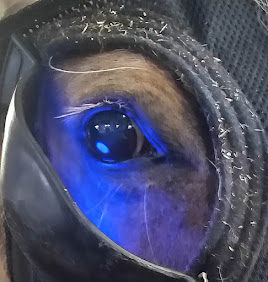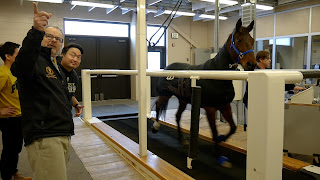Ponies accept drinking water containing low levels of salt and this could potentially be used to help rehydration, according to a recent study.
Horses lose heat by sweating and in doing so lose sodium as well as water. Sodium plays an important role in numerous functions throughout the body. An increase in plasma sodium concentration is a trigger for thirst.
Horse sweat contains high levels of sodium (Na). Excessive sweating may result in the loss of so much sodium that the plasma sodium concentration does not increase enough to trigger drinking. So heavily sweating horses may not voluntarily drink enough water to replenish their body fluids.
Could dilute saline solutions be used as drinking water to help combat sodium loss and dehydration?
A study in Germany by Nick Enke and colleagues assessed whether Shetland ponies would notice and tolerate different salt (NaCl) concentrations in their drinking water.
Six non-pregnant and non-lactating mares were enrolled in the study, which consisted of three phases. In the first phase only fresh water was provided, as a control. In the second phase, a pairwise-preference test, ponies were given a choice between fresh water and one of six different saline solutions. Finally, the ponies were offered a choice of fresh water and five different NaCl concentrations at the same time.
A full report of the work is published in the Animal Science Journal.
The researchers report that during the pairwise test, the ponies did not distinguish between fresh water and 0.25% NaCl-water, but demonstrated a clear preference for water containing 0.5%NaCl. Ponies consistently avoided NaCl concentrations above 0.75%. During the free-choice test, the ponies showed a pronounced preference of fresh over saline water.
They noted that sodium intake from a salt lick was not reduced in response to higher sodium intakes in the water.
They conclude: “The ponies exhibited a remarkable sensory discrimination capacity to detect different NaCl concentrations in their drinking water. The acceptance of solutions with low NaCl levels (0.25/0.5%) without adverse effects demonstrates potential as rehydration solution for voluntary intake.”
For more details, see:
Sensitivity of ponies to sodium in the drinking water
Nick Enke, Lea Brinkmann, Karl-Heinz Südekum, Ernst Tholen, Martina Gerken
Anim Sci J (2022); 93(1):e13697.
https://doi.org/10.1111/asj.13697





